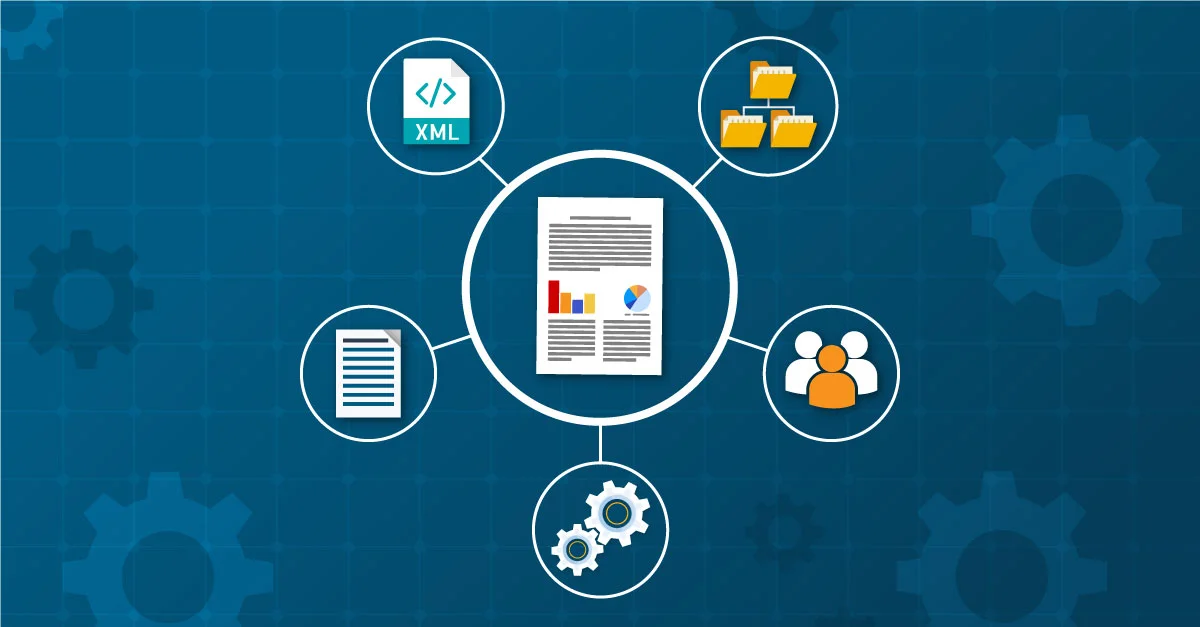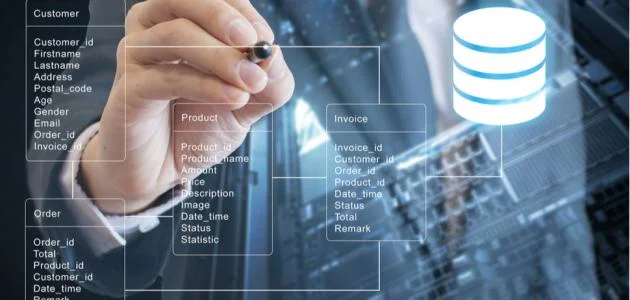Data Management Solutions
Metadata and Data Guides Solutions
Metadata Management
Metadata management is critical to building a data-driven business. It’s called Metadata, but before we can define metadata management, we need to define it.
What is metadata?
MetaData is data about data. It provides the context you need to use your data effectively and unlock its full value. Specifically, metadata helps you discover data, understand the relationships between different pieces of data, track how data is used, and assess the benefits and risks associated with that use.
As data continues to grow at an explosive rate as well as its distribution increases, metadata feeds mission-critical processes – which is why the management of this data now plays a central and strategic role in driving digital transformation.

This data contains information about the organization’s data in the form of entities, related attributes, and interrelationships. According to the most classic classification, we can classify them into three distinct but interrelated types:
- Business metadata (e.g., terms of business, ownership signifiers, related processes, rules)
- Technical metadata (e.g., physical fields, lengths and formulas, computer applications, automatic controls)
- Operational metadata (e.g., flow inputs, conversion completions, control results over a given period of time)
It is essential to have the most complete knowledge of all the organization’s data and to benefit from its value.
Metadata Management System Features
It is important that the MetaData Management System is:

First: Open for links along two dimensions and in two directions:
They record data in the context of entities that interact with data (e.g., processes, applications, and organizational charts), which are often managed in dedicated " vertical" applications – with the physical world. More specifically, they deal with data management tools: data integrity, data quality, data characterization, data discovery, and data masking.

Secondly :
In both cases, the metadata management system should allow the work to be connected in both directions. For example, it can collect data about a process (name, description, owner, etc.) to combine it with information about the input, output, or internal data of the process. Or it can provide business term lookup rules for the data discovery engine. If successful, the engine returns the names of the physical fields that correspond to that business term in the computer system.

Thirdly :
Adapts to the evolution of the business data model. Business processes are reviewed frequently, and new (and more data-intensive requirements) are introduced. There is also a need to support internal initiatives such as those aimed at the digital transformation of the company. All of this means that not only the content, but also the structure of the metadata management system may undergo changes, such as the addition of new entities, attributes, and relationships.

Fourthly :
They can then control the work of the engines by automating repetitive tasks, automatically recognizing data domains, suggesting the most appropriate actions, and linking business conditions to physical records. They can also classify data, identify similar data, and discover other relationships between them.

Fifthly :
It also has a collaborative environment. It is important that different users are able to identify new entities, attributes, and links according to the goals, perspectives, and perspectives of different business communities.
Benefits of a metadata management system
With a MetaData management system, this data becomes a practical asset for your business:
- Automate data management reports (business glossary, enterprise data catalog) and more (control system documents, processing logs, etc.);
- Prepare and provide information services based on available data to answer frequently asked questions (from management, business analysts, IT, data scientists, or data protection officer) about the company’s data assets or to meet regulatory requirements;
- Respond quickly to unexpected requests from colleagues and from internal and external controls (impact analysis, data quality, etc.);
- Lead EIM functions (preparation, quality, transformation, masking, discovery, etc.) thanks to the active metadata function.
Why is metadata management important?
MetaData management is an essential practice for any organization seeking to make better use of its data. It ensures that data is reliable and accessible as appropriate to data consumers across the organization. Most importantly, it gives data consumers visibility into the available data and answers any questions they may have about their data ratios.
Data sequencing is essentially a “source” of data: an ongoing and continuously updated record of where data originated, how it traveled through the organization, how it was transformed, where it was stored, who accessed it, and other key metadata. Because data ratios demonstrate the availability, ownership, security, and quality of data as it flows through the organization, it is an essential part of MetaData data management.
Reasons why metadata management, including data ratios, is important:
- It shows users what data is available.
- It ensures that you see where the data comes from, whether it can be trusted, and how to find it.
- It enables transparency across hybrid and multi-cloud architectures, providing a complete view of data across on-premises and cloud data warehouses.
- Leverage automation to eliminate the need for tedious manual processing of datasets.
Why create and distribute MetaData?
There are a number of reasons to create and distribute metadata. Some of them are listed below:
Good metadata makes it easier for the researcher to manage and track resources in an archive. Large archives always have internal metadata standards that are important for their maintenance. Metadata is critical to the long-term maintenance of any archive file.
While it is not always desirable, many researchers actively want academics and the general public to be aware of the resources they keep. Good MetaData helps people find sources because it provides them with basic information about them in a simple way. The use of a standard data format is especially useful in this field where research tools that use these criteria are developed directly.
MetaData is one of those things that becomes more valuable as more of it is provided.

How does metadata management work?
To build a strong data foundation to support decision-making, follow five distinct steps:
Construction, operation, control, consumption, and measurement. Smart metadata management helps with every step of this lifecycle.

This step in the framework is managed by enterprise data engineers. This involves determining which datasets to move and making decisions about whether all or only part of these datasets need to be moved. The metadata management solution required for the construction phase is the data catalog. Data management in this phase enables organizations to:
- Discover the domain that helps identify sensitive data
- Find similar and relevant data that can be transferred to a data warehouse
- Availability of information related to data attribute identification and quality as data is identified for its preparation
In the operational step, the responsibility for managing MetaData is the responsibility of data engineers and operations leaders. They need to manage constant changes to data, associate the right business context – through metadata – with data, and avoid data duplication.
There are two basic tools at this stage. Data catalog and data management tools.
The benefits of managing metadata during this step include:
- Get notified of any data changes or any additional data coming to the data warehouse or data lake through impact analysis, ratio analysis, and data redundancy analysis.
- You can easily determine whether new data needs to be organized, business context linked, or sensitivity analysis.
- Ensure the governance lifecycle of all onboard data.
- Change workflows as data or business context changes.
The metadata management step is managed by the Data Quality Engineer, Data Administrator, or both, working together. They ensure that the data is of high enough quality to warrant important business and operational decisions, and that the use of sensitive data adheres to both internal privacy policies and external regulations.
Solutions that address this are data management tools, data quality, and data privacy management.
The benefits achieved during this step of metadata management include:
- Widely implement data quality databases across all data warehouses and data lakes
- Ensure compliance with data privacy policies such as the General Data Protection Regulation (GDPR ) and others where data makes its way to consumers
- Reduce risk
- Make better decisions
- Improve employee productivity
Data scientists, data analysts, business users, and citizen scientists are involved in this step. Their constant challenge: to find, discover, and understand the data they need to perform, their functions, and their functions. Data cataloging, data governance, and data market solutions are critical at this stage. Benefits to organizations include:
- Access semantic search capability that helps find data in business language
- Auditability and evaluation to ensure consumers make informed decisions about data use
- Helps users leverage data in a way that helps with specific analytics use cases
- Enable users to “Shop” for the required data and make requests for new data
Finally, we’ve come to measure the performance and value of data that is now stored in a data warehouse or data lake. Data controllers are now in charge, and they must monitor how datasets are performing and how they measure their value to the business.
Solutions to use during this phase of metadata management: data management and data catalog
The benefits of this phase include:
- Understand the quality of each data asset
- Make sure the right business context is linked
- Apply the right data quality rules
- Measure, monitor, and manage the value of data assets

Request a Consultation or Training
Please feel free to contact us for any inquiry













